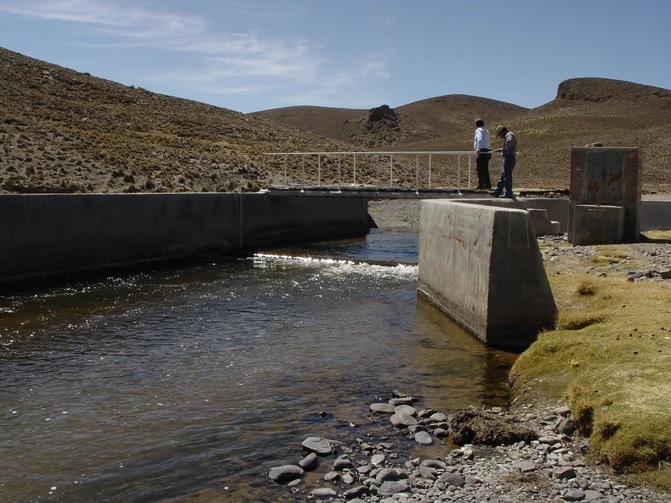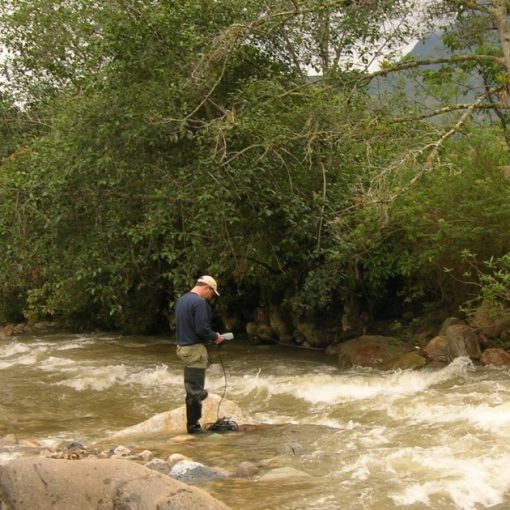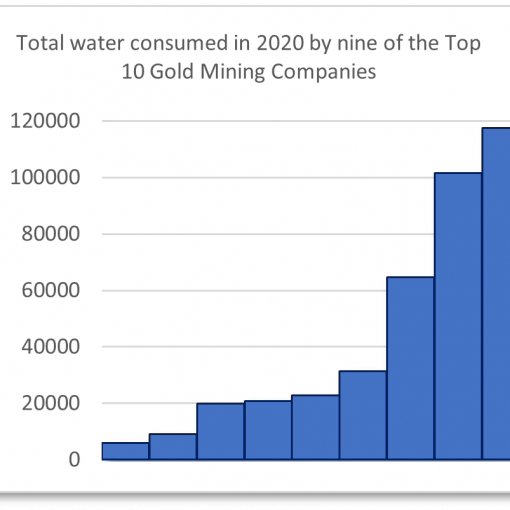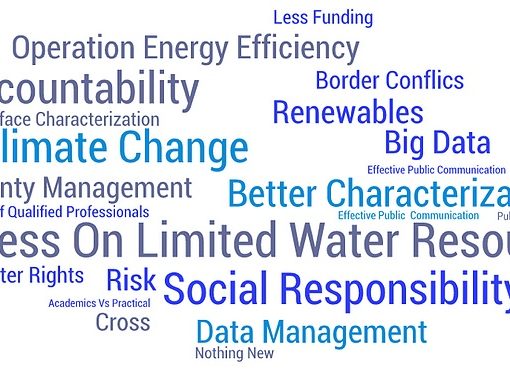Summary:
- Reporting of water performance by mining companies has been increasing in recent times and is a step in the right direction
- Self-promoting social media statements through to public reports satisfying regulatory commitments are common place when reporting water performance
- Significant steps are required before the benefits of consistent and reliable reporting are achieved

Significant steps have been made by the mining industry in the public reporting of water use by operations and closed sites alike. From social media stories through to matter-of-fact corporate disclosure reports, mining companies are making an effort to communicate water management performance.
In addition to the traditional water performance disclosure platforms of GRI and DJSI, organizations such as the International Council of Mining and Metals (ICMM) and CDP (formerly the Carbon Disclosure Project) have also been working with the sector to facilitate reporting, with a goal of consistent and meaningful disclosure. But what are the results so far – are there signs the efforts are bringing returns, whether it be for the community, environment, or the companies themselves? What further work is required to build a more sustainable mining industry focused on responsible water use and management?
To start with, let’s look at what the benefits of responsible full water disclosure may be. CDP is an international organization operating a disclosure system for private and public entities to measure and manage their environmental impact. CDP suggests that the benefits of water disclosure reporting include better understanding of risks, improved investor relations, and improved water security. Mining industry member organization ICMM outline a similar set of benefits, with the added focus of providing a water stewardship framework built around key elements of transparency, engagement, environmental context, and effective water resource management.
All noble goals and certainly born from a need to improve not only the industry’s performance with regard to water management but also towards improving overall reputation and stakeholder trust.
A scan of the most recent corporate sustainability reports from a small selection of industry majors reveals some encouraging results:
“……we met our public water target, for 2018 as well as for 2019, reducing our overall water consumption by 6 percent compared to our 2016 baseline.”
“Replacing 50 percent of the freshwater needs at ……. with treated effluent from a newly constructed wastewater treatment plant”
“The greater than 1-in-100 year rainfall event saw 538mm fall in just seven days …… At the mine site itself however, good planning meant the event was handled well, with additional resources deployed as needed and the environment protected.”
However, the good news is also countered with some not-so-good:
“Two (of the) fines related to exceeding discharge quantity allowances…”
“The site experienced issues with the Effluent Treatment Plant (ETP). This resulted in a temporary period where the discharged treated water exceeded compliance thresholds, particularly with regard to suspended solids.”
“…..effluent was discharged outside of [the] applicable water quality standards.”
The reporting of positive outcomes (as self-promoting as they may be) along with not-so-positive events, under the banner of sustainability and disclosure is to be considered a step forward. But let’s not get complacent, the opportunity to do better is absolutely necessary. The fact is that water is a significant risk to the ability of a mining company to operate.
Several frameworks exist in support of water management planning and achieving higher levels of water stewardship (e.g. CEO WaterCEO WaterCEO WaterMandate, Alliance for Water Stewardship, ICMM Water Stewardship Framework). Only the Alliance for Water Stewardship considers independent certification (i.e. AWS Standard), however, no mining companies have taken this step to my knowledge.
Water disclosure reporting platforms such as CDP Water and GRI provide the opportunity for mining companies to publish their performance in a consistent manner, and in the case of CDP receive a publicly available rating based on performance. However, for the independent person looking for an insightful statement as to the true commitment of the company to responsible water stewardship there are shortcomings, not least the lack of insight as to how the results were achieved but also the framework and processes involved. For example, the company completed CDP questionnaires may or may not be released in the reporting process and the CDP rating result is somewhat of a black box.
Internal to a mining company, operational benefits from implementing a consistent reporting framework are also significant but tend to be undervalued. Interestingly, whilst water is such an important element in the success of the mining business, it is often one of the most poorly understood elements on a site. Developing a plan to address identified water challenges, both short term and long term, and tracking the performance of the plan through time is crucial in managing risks at a local level and across a portfolio of properties. Following well established and thought-out processes and applying reporting formats such as the Minerals Council of Australia’s Water Accounting Framework (and supported by the ICMM) allows mine teams and company management to better understand water use and management across a site and identify opportunities.
Today, the onus appears to be on the mining company itself to provide the data, the context, the progress, and the plan. Following a framework and reporting guidance such as that of the ICMM is a step forward, however, without validation by an independent entity there may also be scope for misunderstanding and mistrust. Whilst yet another certification process (e.g. AWS) for an increasingly regulated industry may not be very welcome, it may be a step forward rather than relying on self-governance to ultimately achieve stakeholder trust and collaboration, and reach a higher level of Water Stewardship.





2 thoughts on “Water disclosure reporting – fact or fiction?”